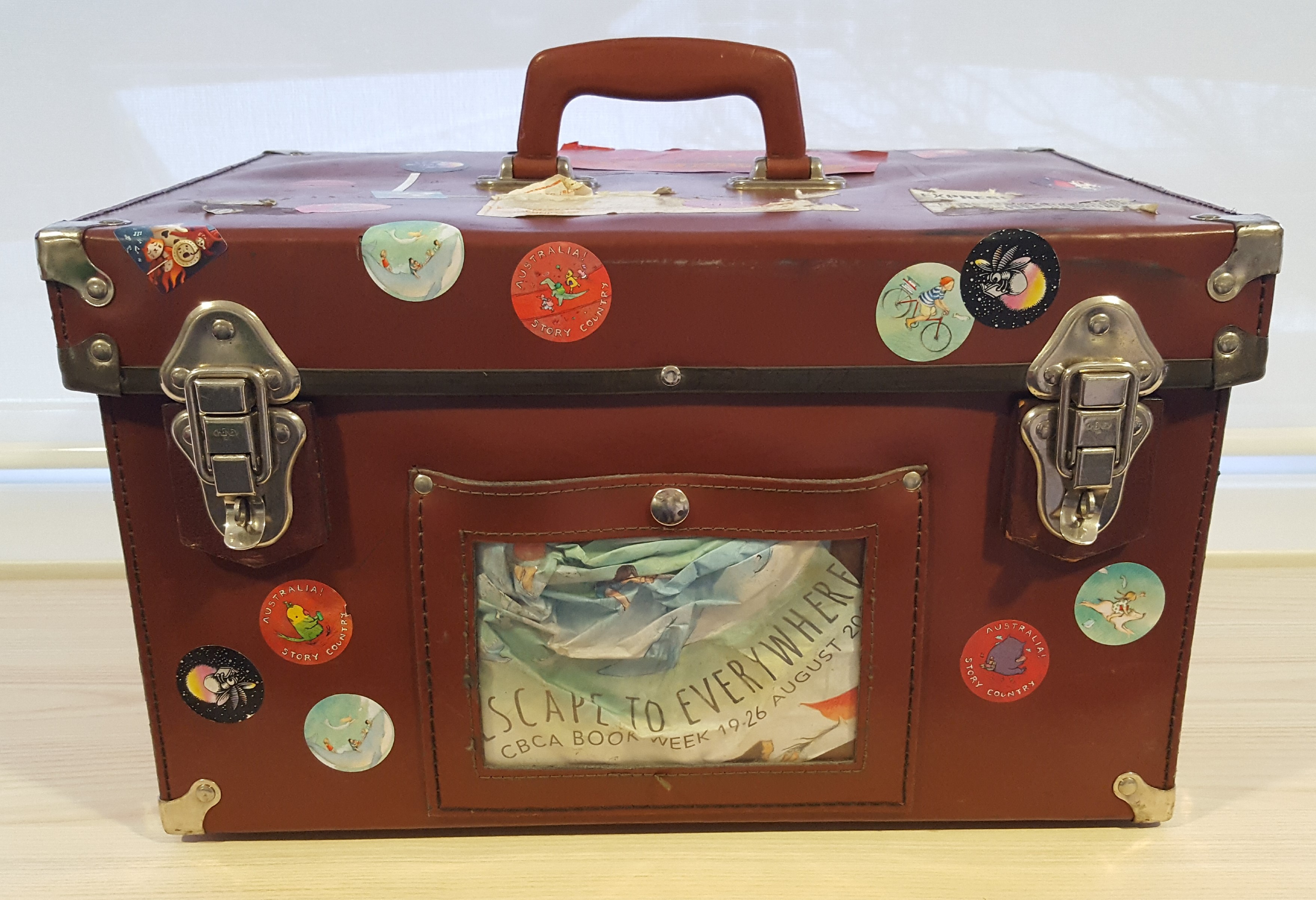Issue 102
Term 3 2017
Read, respond, celebrate: engaging with the CBCA short list
Josephine Laretive suggests ways to explore the CBCA's short list, providing students with rich learning experiences.
Each year The Children’s Book Council of Australia (CBCA) promotes and celebrates children’s books with the major event of Children’s Book Week during August. The five CBCA short list book categories offer schools an abundance of opportunities to engage with reading, responding to, and celebrating literature. Exploring the short list books aligns with the Australian Curriculum and provides important opportunities to build students’ literacy skills through incorporating rich, objectively selected, and aesthetically valuable texts. This article focuses on using the Early Childhood and Picture Book short list books, as well as providing an insight into exploring the Younger Readers chapter books in the F–6 school context.
Reading and examining the short list books ensures students are given opportunities to ‘develop an informed appreciation of literature’ (ACARA). Engaging with the short list books enables teacher librarians to effectively apply the Australian School Library Association (ASLA) teacher librarian standards: Professional knowledge and promotion of reading; Professional practice encouraging and empowering ‘learners ... to read, view, listen and respond for understanding and enjoyment’; and Professional commitment supporting ‘a reading culture through the active promotion of literature’ (ASLA 2004).
Designing teaching and learning opportunities using the short list allows for authentic reading experiences and literacy activities that stimulate ideas and feelings, making reading meaningful and exciting. The short list books require reading aloud; Lowe (2016, p 38) emphasises that reading aloud exposes children to a wide variety of texts, ‘creates a desire to read ... gives students access to the rich language of stories [and] stimulates curiosity’. Reading aloud and ‘shared oral responses [also] offer differing perspectives to a text’ (Evans 2009, as cited in Turner 2014, p 52), enhancing sense-making. Furthermore, the range of books in each category and purposefully planning lessons where students are ‘aware’ of the learning intention, such as examining story elements, utilising thinking routines, or expressing personal preference, allows for content to be introduced and applied to the different books, binding various aspects of the curriculum and providing opportunities for students to relate new learning to the range of texts (Lowe 2016, p 39).
Proven Early Childhood activities
Starting the first week of Term 3, we introduce students to the plan for the weeks leading up to Book Week. We create and show students a voting chart so they are clear about the six books to read, explore and share personal preferences on (see the Australian Curriculum: ACELT1577, ACELT1582, ACELT1590). We use a prop such as an old suitcase to store the books. Each lesson we open the case and select a new book — this simple act prepares ‘a route’ into each book, creating ‘suspense and engagement’ before the book is opened (Seven Stories 2013, p 104).

Using a prop such as a suitcase to store shortlisted books creates an engaging display.
Foundation classes
In Foundation classes we focus on the main character (ACELT1578), and at the end of each story, we discuss the term ‘character’ as the main person, animal or lifelike thing. Once all books have been read, children vote for their favourite book by placing a star on the voting chart. Each child selects a character to illustrate on a pre-cut triangle that can be easily placed within a bunting to display in the library. Year 1 Following the Visible Thinking guidelines (Harvard University n.d.) for ‘Step inside a character’, we ask Year 1 to respond to each book using focus questions that include (ACELT1584):
- Who is the main character?
- What can the character see?
- What might the character think?
- What might the character care about?
These questions elicit structured thinking, which deepens the students’ understanding.
Once we finish reading and exploring all the books, we ask the children to illustrate the main character from one of the stories. Writing prompts are introduced to structure the writing and follow the Step Inside questions. The students are able to respond productively and deeply as the thinking routine is revised for each book.
Year 2
The shortlisted books lend themselves to investigation of character, setting, plot, theme, symbols, and perspectives, and are ‘a rich source for guiding classroom enquiries into how literary texts work’ (McDonald 2013, p 66). Examining the short list with Year 2 provides the most energetic and exciting of lessons. The first story is read and the activity modelled with students responding to the following questions (ACELT1591, ACELA1469):
- Who is the main character? Are there supporting characters?
- Where is the story set? Is the setting realistic, magical, set in the past, present, or future?
- What is a message or a lesson from the story?
- What is a symbol (object, action, or expression) in the story?
- The story made me think about ...
After the additional stories have been read, the students work in small teams and answer one of the focus questions, which they record and share with the class. For the main activity, we divide the students into six groups to design and create a diorama. We provide a planning guide, assign roles within the group, and students devotedly create dioramas in response to the books (ACELT1593).
Proven Picture Book activities
The shortlisted Picture Books comprise complex social, cultural, and/or historical issues, as well as multiple connections ‘between pictures, texts and narratives’ (Waugh, Neaum & Waugh 2013, p 75). By applying Visible Thinking routines, a ‘procedure ... that is used repeatedly [and] provides ... a framework for focusing attention on specific thinking’ (Ritchhart, Church & Morrison 2011, p 45), multifaceted aspects within the texts can be observed and comprehended.
Year 3
Applying the Colour, Symbol, Image (CSI) thinking routine to each Picture Book, Year 3 are able to apply their thinking and observe others’ thoughts to extend their understanding (ACELY1680). After sharing responses for each book, students select one book to respond to, following the CSI prompts to write and illustrate. Displaying students’ work in the library not only celebrates the students’ achievements but also provides an extensive range of thoughtful responses to the shortlisted picture books.
Year 4
Year 4 follow the Step Inside thinking routine (ACELT1605), responding to each book and recording their ideas on a sticky note or using Socrative.com. The Step Inside questions are similar to those for Year 1: What can the character see, observe or notice? What might the character know, understand or believe? What might the character care deeply about?
The students select one of the books to extend on, illustrating a character and scene, and writing their response following the Step Inside questions. The end results are imaginative and entail reflection from the point of view of the character.
Suggested Younger Readers activities
Year 5
To explore the Younger Readers chapter books, we organise Year 5 into six groups and provide each with one of the books to review. Each group is asked to investigate the book based on a set of questions, and to create a poster to share with the class and a display to promote the books to others. As there is limited time, we provide students with guides to help them discover different features of the book as they skim, scan and analyse the texts (ACELY1703, ACELY1702). The key questions relate to the genre (ACELT1608), point of view of the character (ACELT1609, ACELT1610), descriptive language devices for a setting, and describing the main character (ACELA1508).
Year 6
It would be suitable for Year 6 to do an extension of the book investigation using technology to create a presentation. As it is difficult to read all the novels to the class, an in-depth study of one or two of the novels would be a wonderful way to engage with the Younger Readers short list. The Primary English Teaching Association Australia (PETAA) provides an extensive range of ideas for each book to assist with such a task. Revisiting the previous short lists also provides a sound avenue to select quality literature for reading suggestions and class novel studies. Alternatively, an investigation of the Picture Books’ visual literacy elements (ACELT1617), where students examine and share findings of salience, reading paths, composition, vectors, and gaze, would make a focused and significant unit of work to ‘engage ... with both image and word acknowledging ... other modes and communicative forms [that] are part of the literary landscape’ (Callow 2013).
To honour and celebrate the CBCA short list, students’ written and artistic responses provide outstanding displays for the school. Engaging students with quality literature sparks ideas and emotions, while sharing literature with students ultimately informs and motivates reading appreciation and passion.
Image credits
Photo supplied by Josephine Laretive.
References
- Australian Curriculum, Assessment and Reporting Authority nd, Australian Curriculum English 8.5, retrieved from https://www.australiancurriculum.edu.au/f-10-curriculum/english/rationale/
- Australian School Library Association 2004, Standards of professional excellence for teacher librarians, retrieved from http://www.asla.org.au/policy/standards.aspx
- Callow J 2013, The shape of text to come: how image and text work, Newtown NSW, Primary English Teachers Association Australia
- Children’s Book Council of Australia nd, About the Children’s Book Council of Australia, retrieved from https://cbca.org.au/about
- Lowe K 2016, For the love of reading, Newtown NSW, Primary English Teachers Association Australia
- McDonald L 2013, A Literature companion for teachers, Newtown NSW, Primary English Teachers Association Australia
- Ritchhart R, Church M & Morrison K 2011, Making thinking visible, ProQuest Ebook Central, retrieved from http://ebookcentral.proquest.com.ezproxy.csu.edu.au/lib/csuau/detail.action?docID=7068
- Staff from Seven Stories 2013, Creative engagement with children’s literature, in Waugh D, & Neaum S Beyond Early Reading (pp 101–117), ProQuest Ebook Central, retrieved from http://ebookcentral.proquest.com.ezproxy.csu.edu.au/lib/csuau/detail.action?docID=1511027
- Turner C 2014, Opening the portal: an exploration of the use of postmodern picture books to develop critical literacy and contribute to learning in the Australian Curriculum: English, Literacy Learning in the Middle Years, 22(1), 52–61
- Waugh D, Neaum S & Waugh, R 2013, Children’s literature in primary schools, Los Angeles California, Learning Matters
